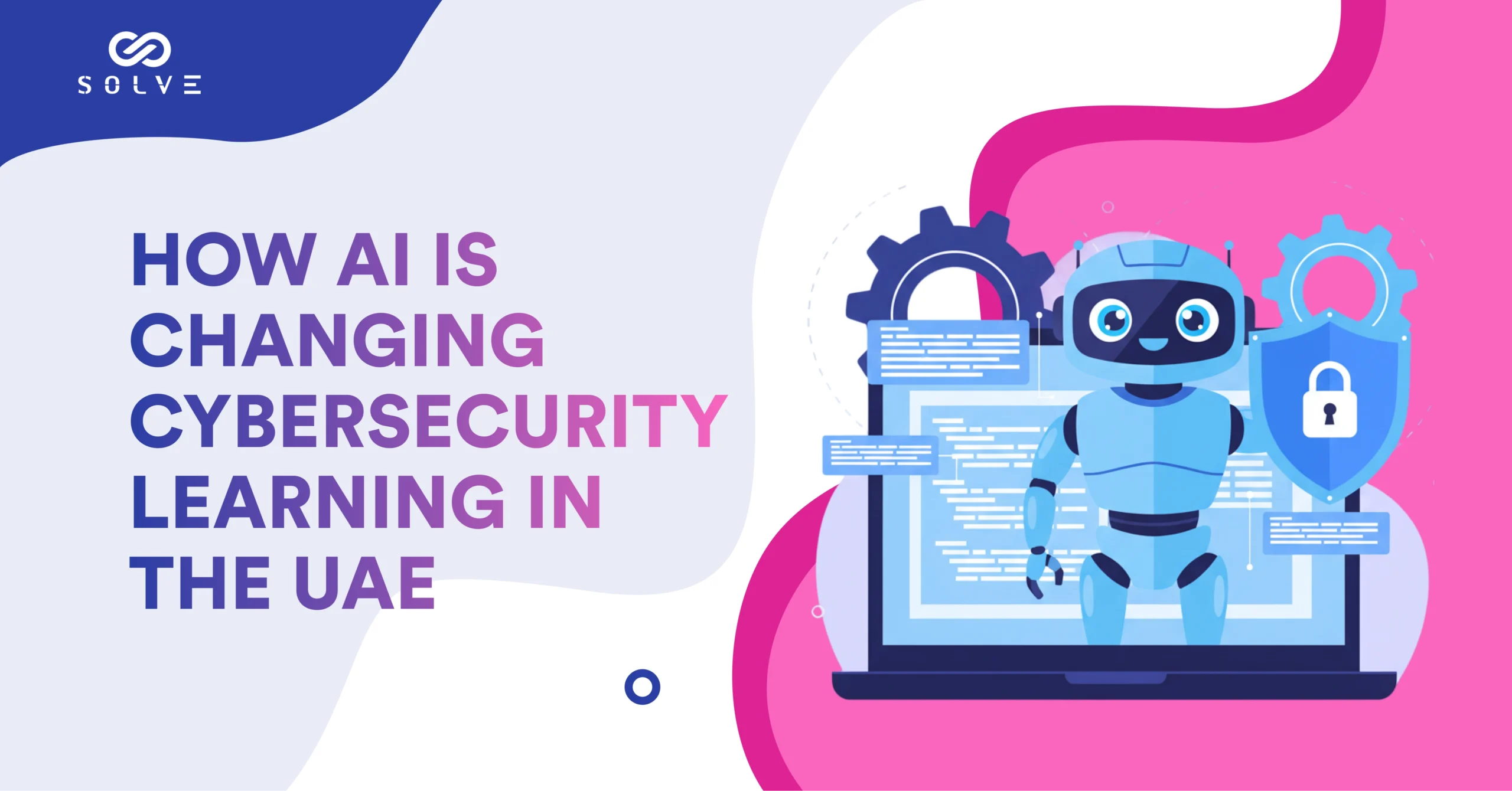- By Vanshika Choudhary
- September 8, 2025
Artificial intelligence is transforming industries across the board, and cybersecurity education is no exception. It is, however, in the case of the UAE, with a burgeoning digital infrastructure, that AI is increasingly being harnessed to learn and train cybersecurity professionals for real-world challenges. AI in this way provides for highly customized, interactive training, bearing very current content, so that the industry can build a stronger cybersecurity Learning in the UAE.
AI-Powered Personalized Learning
Perhaps the biggest benefit of AI in cybersecurity education is the fact that it personalizes learning experiences for the individual student.
Adaptive Learning Paths
AI systems analyze an individual learner’s strengths and weaknesses and create a learning path to match these qualities. In other words, a student is not expected to follow a pre-determined Learning in the UAE curriculum but receives a training module assignment that fits his or her skill levels and knowledge gaps. Learners thus focus on areas that require most of their improvement; hence, their study time is well spent.
Real-Time Feedback
When learners make mistakes in a challenge, the system points out the errors as soon as they happen and explains why it was wrong. Real-time correction allows the learner to effectively comprehend the concept and avoid making the same mistake again, thereby building up their skill set at an accelerated rate.
Skill Gap Identification
Continuously assessing performance, AI tools keep track of the learner’s profile and identify specific gaps in skills. For example, if a student struggles in a technical area, the system will note this gap and may attempt to remediate the issue with targeted exercises.
Skill Gap Assessment
In an ongoing assessment of learner performance, AI tools identify skill gaps. Trainers and learners can then spend time on the weaker side to ensure that they have a well-balanced knowledge base geared toward protection from various cybersecurity threats. Check out our latest blog post on How Mobile Optimization Makes Online Shopping Easier
Simulated Cybersecurity Environment
Hands-on will always remain fundamental to cybersecurity learning, and AI thus makes us more realistic and more diverse in simulation.
Threat Simulation
The AI sets up a virtualized terrain in which the learners would need to respond to simulated cyberattacks, such as phishing, malware, or ransomware. These simulations simulate real-life circumstances for students to practice detecting and responding to threats in the ends of the simulations safely; they can then move further to actually experience the attacks, erecting confidence and practical skills elicited by theory only.
Safe Experimentation
In AI-enabled labs, learners can experiment with different defense methods without endangering real systems. They can put firewalls, intrusion detection systems, and incident response plans to the test under safe conditions. This process of safe experimentation promotes innovative thinking and helps deepen the learners’ understanding of cybersecurity tools and techniques.
Scenario Diversity
Over time, AI develops a variety of attack scenarios. This vast spectrum exposes learners to many types of threats-and recent threats at that. Thanks to training in versatile scenarios, adaptability is nurtured, preparing students for career-related emerging cyber risks.
Automation in Cyber Security Training
AI handles mundane work in cybersecurity education, thus enabling students and staff to use their time efficiently.
Automated Assessments
Such automation offers the necessary relief to the instructors and allows immediate feedback to the learners. Immediate graded feedback helps students in tracking their progress and identifying areas they need to work on without waiting for days.
Content Updating
AI systems update the training material at the same time with current information about the vulnerabilities, mechanisms of attacks, and ways of defending against them. Hence, learners are always studying _modern_ and _relevant_ content, while their skills remain sharp.
Resource Recommendation
Based on the interests and performance of learners, AI recommends additional resources such as articles, videos, secondary courses, and so on. These recommendations help the students build in-depth knowledge in a certain area and keep them engaged with the process.
Impact on the UAE Cybersecurity Workforce
Therefore, AI education is sustaining the provision of digital defense under the country of the UAE.
Faster Skill Acquisition
AI-based programs enhance the rates of Learning in the UAE as per individual needs and practical training. This fast-track training is reactive to the increasing demand for cybersecurity expertise in the UAE as its digital economy flourishes.
Better Prepared Professionals
By giving more realistic scenarios to train in with current topics, learners shall only graduate with hands-on experience and current topical knowledge. This level of preparation guarantees that the teams defending organizations will be capable of fending off sophisticated organizations against cyber threats.
Supporting National Security
A trained workforce assures the protection of critical infrastructure, government logic, and businesses within the Emirates.
Conclusion
In the UAE, AI is fast reshaping cybersecurity education by convening personalized, practical, and efficient learning. This transition is thus enabling the workforce to actively engage emerging cyber threats as far as protecting the digital future of the country is concerned. Are you attempting to push aside your cybersecurity skills or looking to train your team? Contact us to get customized solutions to keep abreast of this!




